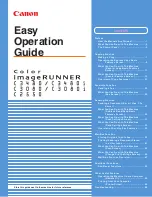
2-32
Theory of Operation
HID Corporation and is shown here for educational purposes. The printed image
on the card is an artist’s rendering.
Contact Smart Cards
A contact smart card needs to connect to an external interface to provide the
processor with power and to set up serial communication. The eight terminal
contacts are described in the table below. (Note that two contacts are reserved for
future use.)
There are two classes of contact smart cards: Type-A cards operate at 5 volts, and
Type-B cards operate at 3 volts.
Smart Card Contacts
No. Name
Purpose
No. Name
Purpose
C1 VCC
Supply voltage (3 or 5 V)
C5 GND Ground
C2 RST
Resets the processor
C6 VPP
Variable voltage for programming
C3 CLK
Provides the timing (clock) signal
C7 I/O
Data line
C4 N/A
Reserved for future use
C8 N/A
Reserved for future use
Initiating Communication
When the card is inserted into a reader, it needs to be initialized and
communication protocols defined. Note that steps 1 through 6 all occur while the
card is forced to remain in a reset state (no activity).
1.
The card reader senses that the card is in position under the contacts. In most
cases, this is a mechanical switch that detects the presence of a card (any type
of card).
2.
The Reset line (C2) is held low. (The active-low reset forces the card to remain
in the reset state until released.)
3.
Power is applied to the Vcc and Gnd contacts.
•
A Type-A reader will apply 5 volts to the card. (Type-B cards must accept
the overvoltage, but are not allowed to respond.)
•
A Type-B reader will apply 3 volts to the card.
•
A Type-A/B reader will first apply 3 volts to the card. If no response is
received, it removes power, waits, and reapplies power at 5 volts.
4.
The I/O line is held in the Receive mode (high impedance).
5.
If the card is a Type-A card, the programming voltage (Vpp) is placed in the
pause value, which is equal to Vcc.
Summary of Contents for CP80
Page 1: ...Datacard CP80 and CP80 Plus Card Printers Service Manual May 2007 Part No 539490 002 Rev C ...
Page 14: ...1 4 Introduction ...
Page 17: ...CP80 and CP80 Plus Service Manual 2 3 Print Engine Functional Block Diagram ...
Page 18: ...2 4 Theory of Operation Laminator Functional Block Diagram ...
Page 22: ...2 8 Theory of Operation LCD Service Mode Menu Diagram ...
Page 52: ...2 38 Theory of Operation ...
Page 158: ...6 6 Removal and Replacement Print Engine Front Wire Routing Diagram ...
Page 159: ...CP80 and CP80 Plus Service Manual 6 7 Print Engine Duplex and Printhead Wire Routing Diagram ...
Page 160: ...6 8 Removal and Replacement Laminator Front Wire Routing Diagram ...
Page 161: ...CP80 and CP80 Plus Service Manual 6 9 Laminator Rear Wire Routing Diagram ...
Page 162: ...6 10 Removal and Replacement Power Supply Wire Routing Diagram ...
Page 163: ...CP80 and CP80 Plus Service Manual 6 11 Print Engine Cable Connection Diagram ...
Page 164: ...6 12 Removal and Replacement Laminator Cable Connection Diagram ...
















































